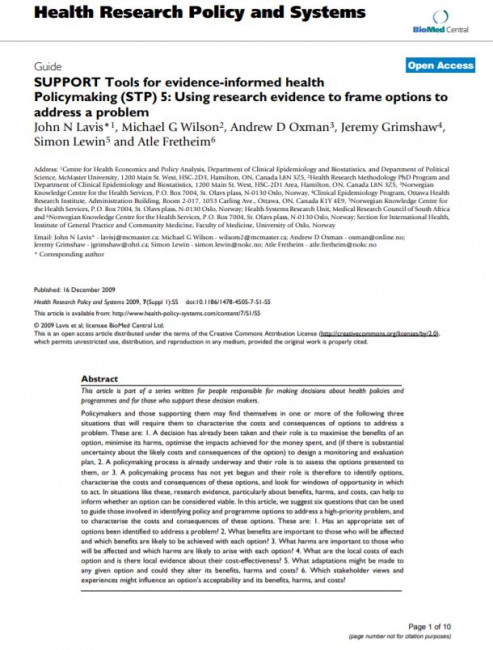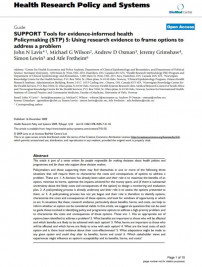This article is part of a series written for people responsible for making decisions about health policies and programmes and for those who support these decision makers.
Policymakers and those supporting them may find themselves in one or more of the following three situations that will require them to characterise the costs and consequences of options to address a problem. These are: 1. A decision has already been taken and their role is to maximise the benefits of an option, minimise its harms, optimise the impacts achieved for the money spent, and (if there is substantial uncertainty about the likely costs and consequences of the option) to design a monitoring and evaluation plan, 2. A policymaking process is already underway and their role is to assess the options presented to them, or 3. A policymaking process has not yet begun and their role is therefore to identify options, characterise the costs and consequences of these options, and look for windows of opportunity in which to act. In situations like these, research evidence, particularly about benefits, harms, and costs, can help to inform whether an option can be considered viable. In this article, six questions that can be used to guide those involved in identifying policy and programme options to address a high-priority problem, and to characterise the costs and consequences of these options are suggested. These are: 1. Has an appropriate set of options been identified to address a problem? 2. What benefits are important to those who will be affected and which benefits are likely to be achieved with each option? 3. What harms are important to those who will be affected and which harms are likely to arise with each option? 4. What are the local costs of each option and is there local evidence about their cost-effectiveness? 5. What adaptations might be made to any given option and could they alter its benefits, harms and costs? 6. Which stakeholder views and experiences might influence an option's acceptability and its benefits, harms, and costs?



